We do automatic watering of a room flower on Arduino in 15 minutes
After I had died another flower, I realized that it would be nice to somehow automate the process of watering.
Without further ado, I decided to put together a design that would water the flower instead of me. As a result, I had such a device, which copes with its duties:
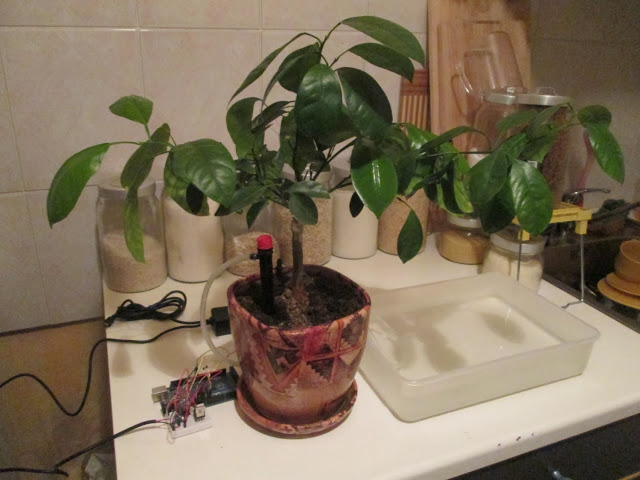
With the help of two regulators you can adjust the volume of water poured at a time, as well as the period between irrigations. Who cares - further detailed instructions on how to make such a device.
To build a polivalki you need a number of components and no more than 30 minutes of free time.
')
Components Used:

We collect everything according to this scheme:

Or clearer:
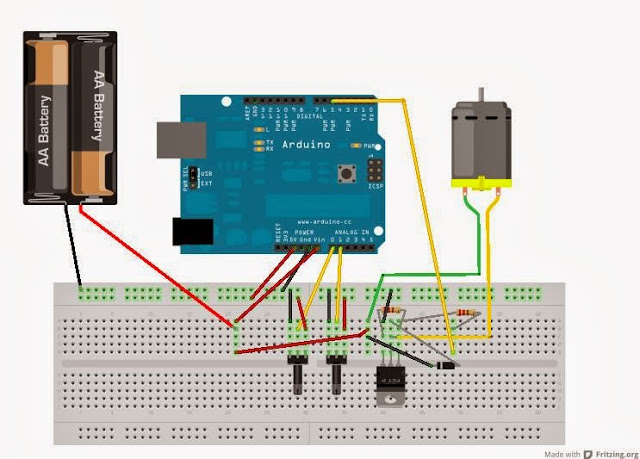
That's what happened with me:

First we test the pump. Give him 5V. If he buzzed, everything is in order, move on.
Now connect the pump to the Arduino. We will make a small strapping on the breadboard for controlling the pump with arduino.
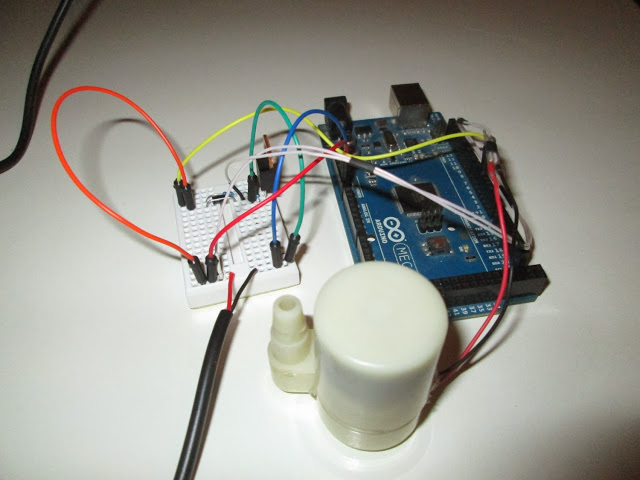
Let's try to control the pump with Arduino. We flood such code
If he buzzes occasionally, then everything is fine again.
Now we have to add two regulators. We hook up to our device variable resistors, and check their performance.
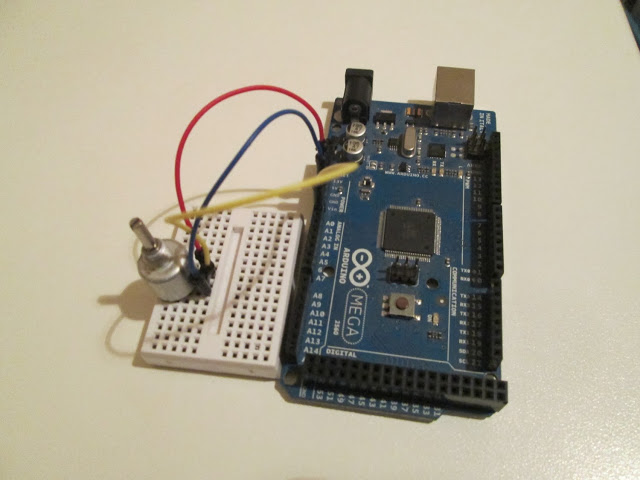
We flood such code on Arduino
Go to the Serial Monitor and make sure that there is a reaction to the rotation of the regulator. It should vary from approximately 0 to 1024.
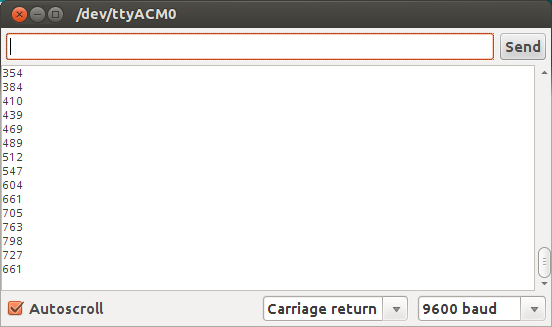
It now remains to make earn it all together.
Here is the direct code of the water filter:
Here is the final result in the work:
In the near future, I think here to add a sensor of the water level in the tank and a soil moisture sensor.
Without further ado, I decided to put together a design that would water the flower instead of me. As a result, I had such a device, which copes with its duties:

With the help of two regulators you can adjust the volume of water poured at a time, as well as the period between irrigations. Who cares - further detailed instructions on how to make such a device.
To build a polivalki you need a number of components and no more than 30 minutes of free time.
')
Components Used:
- Arduino Mega (it was just at hand, but any other would do)
- Pump and silicone tube (car window washer pump will do - you can buy it in any auto parts or you can buy a small submersible pump on ebay)
- Power Supply
- Two variable resistors to adjust (any)
- IRL3705N Transistor
- Two resistors (100 Ohm and 100 kΩ)
- Diode (any)
- Water tank (in my case, a plastic box from Ikea)
- Mockup

We collect everything according to this scheme:

Or clearer:

That's what happened with me:

First we test the pump. Give him 5V. If he buzzed, everything is in order, move on.
Now connect the pump to the Arduino. We will make a small strapping on the breadboard for controlling the pump with arduino.

Let's try to control the pump with Arduino. We flood such code
int pumpPin = 5; void setup() { pinMode(pumpPin, OUTPUT); digitalWrite(pumpPin, LOW); } void loop() { digitalWrite(pumpPin, HIGH); delay(1000); digitalWrite(pumpPin, LOW); delay(1000); } If he buzzes occasionally, then everything is fine again.
Now we have to add two regulators. We hook up to our device variable resistors, and check their performance.

We flood such code on Arduino
int volumePin = A0; void setup() { pinMode(volumePin, INPUT); Serial.begin(9600); } void loop() { Serial.println(analogRead(volumePin)); delay(100); } Go to the Serial Monitor and make sure that there is a reaction to the rotation of the regulator. It should vary from approximately 0 to 1024.

It now remains to make earn it all together.
Here is the direct code of the water filter:
// , ( 4 15 ) #define MAX_FLOWTIME 15 // seconds #define MIN_FLOWTIME 4 // seconds // #define MAX_PERIOD 7 // days #define MIN_PERIOD 1 // days #define MAX 1015 #define MIN 0 int volumePin = A0; // , , int periodPin = A1; // , , int pumpPin = 5; // , int volume; int period; // , , volume void water() { digitalWrite(pumpPin, HIGH); // delay(volume); digitalWrite(pumpPin, LOW); // delay(period); } void setup() { pinMode(pumpPin, OUTPUT); digitalWrite(pumpPin, LOW); } void loop() { // ( ) volume = map(analogRead(volumePin), MIN, MAX, MIN_FLOWTIME, MAX_FLOWTIME) * 1000; period = map(analogRead(periodPin), MIN, MAX, MIN_PERIOD, MAX_PERIOD) * 1000 * 60 * 60 * 24; water(); } Here is the final result in the work:
- youtu.be/qHmjWkZ_seM - flower
- youtu.be/3VdgH9uwMCY - device
In the near future, I think here to add a sensor of the water level in the tank and a soil moisture sensor.
Source: https://habr.com/ru/post/210814/
All Articles